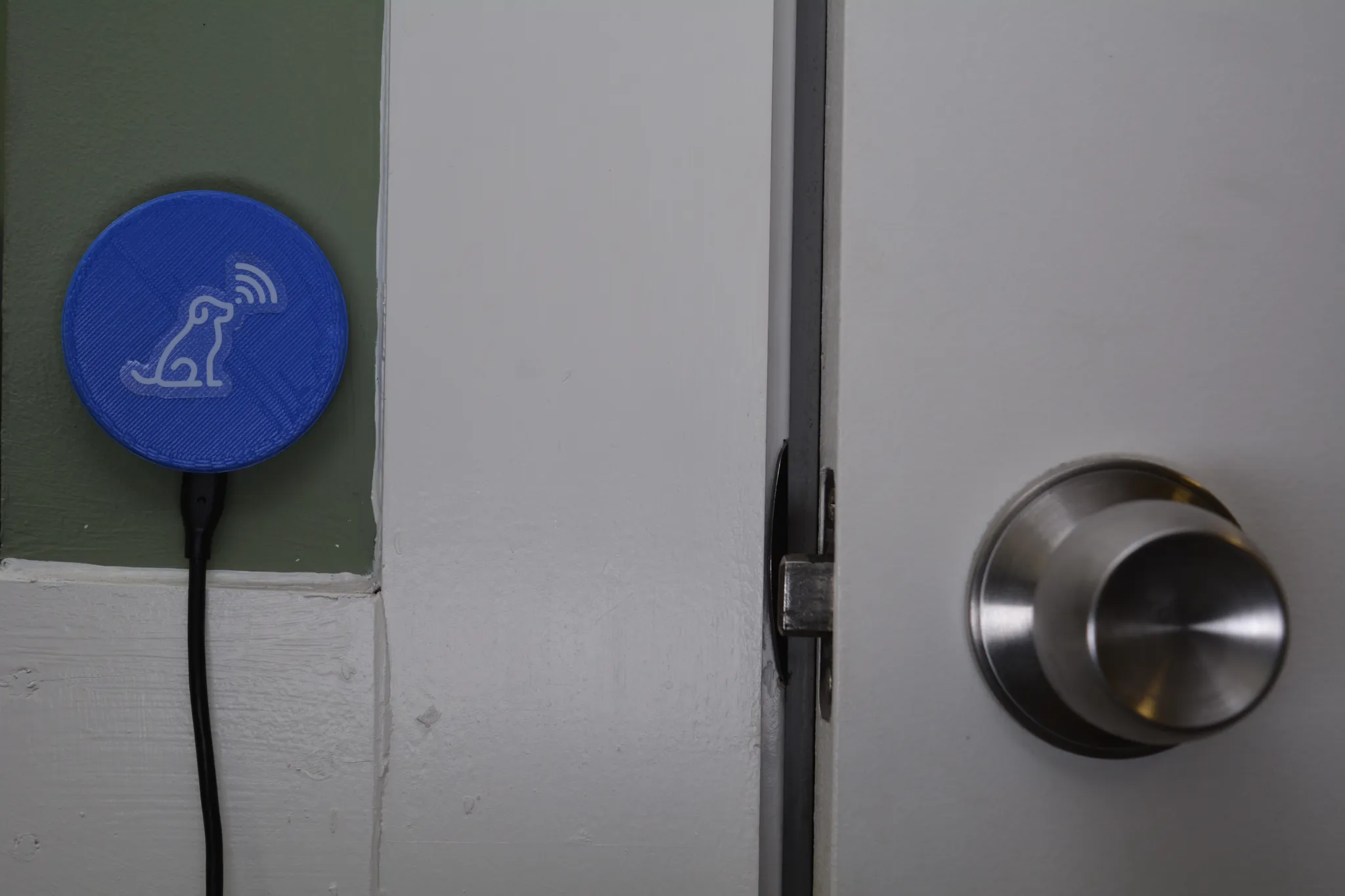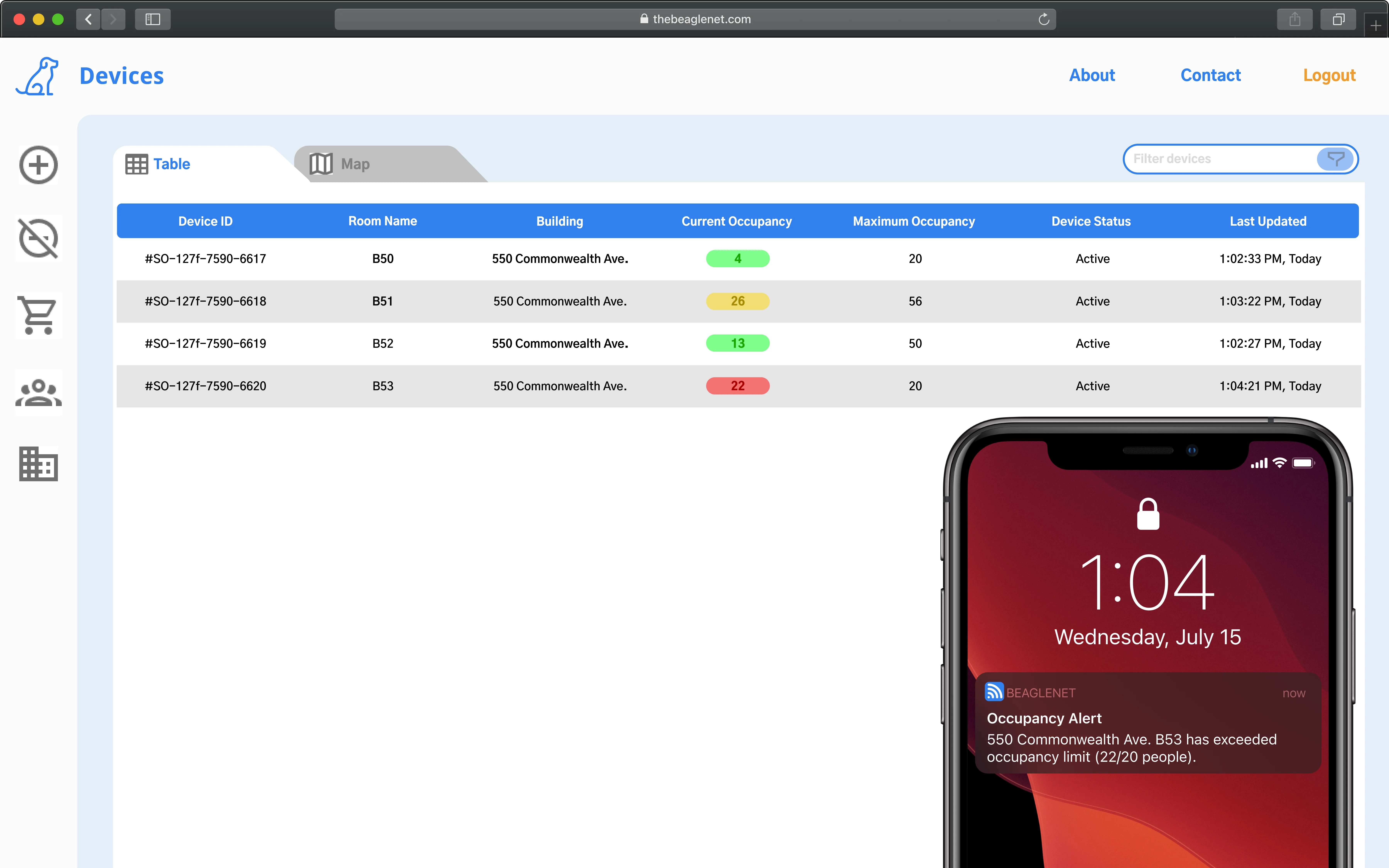BeagleNet
/ 2 min read
BeagleNet is an affordable occupancy monitoring platform designed to keep indoor spaces safe and healthy by autonomously enforcing occupancy limits across a school campus. BeagleNet is a commercial venture I co-founded that has been sponsored by Boston University with over $20,000 of non-dilutive funding. As the team lead, I was responsible for coordinating between the hardware, software and firmware aspects of the project. I led the software and hardware development of the radar-based people-flow measuring system, which is currently still in progress.
Our first prototype sensors used anonymous Bluetooth Low Energy data transmitted from nearby mobile devices to estimate the number of people inside an indoor area. To cover larger indoor spaces, multiple Bluetooth sensors can be paired together and form a mesh network. The BeagleNet sensors use the low-overhead MQTT wireless communication protocol to report occupancy counts for individual rooms to an Amazon Web Services database over a wireless 2.4 GHz connection. The onboard sensor firmware for various prototypes are written in C, C++ or python. Administrators are able to view occupancy metrics across an entire campus in-real time on the BeagleNet web and mobile apps and receive alerts if any occupancy-limits they set are breached.
In order to improve people-flow counting accuracy and experiment with alternative counting techniques, I developed a novel radar-based people counting system. Using radar allows the system to accurately measure the position of a person walking through an entrance in three dimensions and unlike camera-based alternatives, by design the radar maintains anonymity. Because radar can penetrate non-metallic materials, the radar-based unit can be completely concealed behind a drop ceiling, making the technology completely unobtrusive for people using the space. The radar-based system was very successful, and we are currently working on improving the radar’s accuracy to match commercially available camera-based people counting systems.

The BeagleNet bluetooth-based occupancy sensor mounted to the wall.

The BeagleNet web-app showing real-time occupancy data.
A visualization of the radar people counting sensor tracking a person in real-time. Note that because of the limited resolution of the radar sensor, the system is inherently privacy protecting.